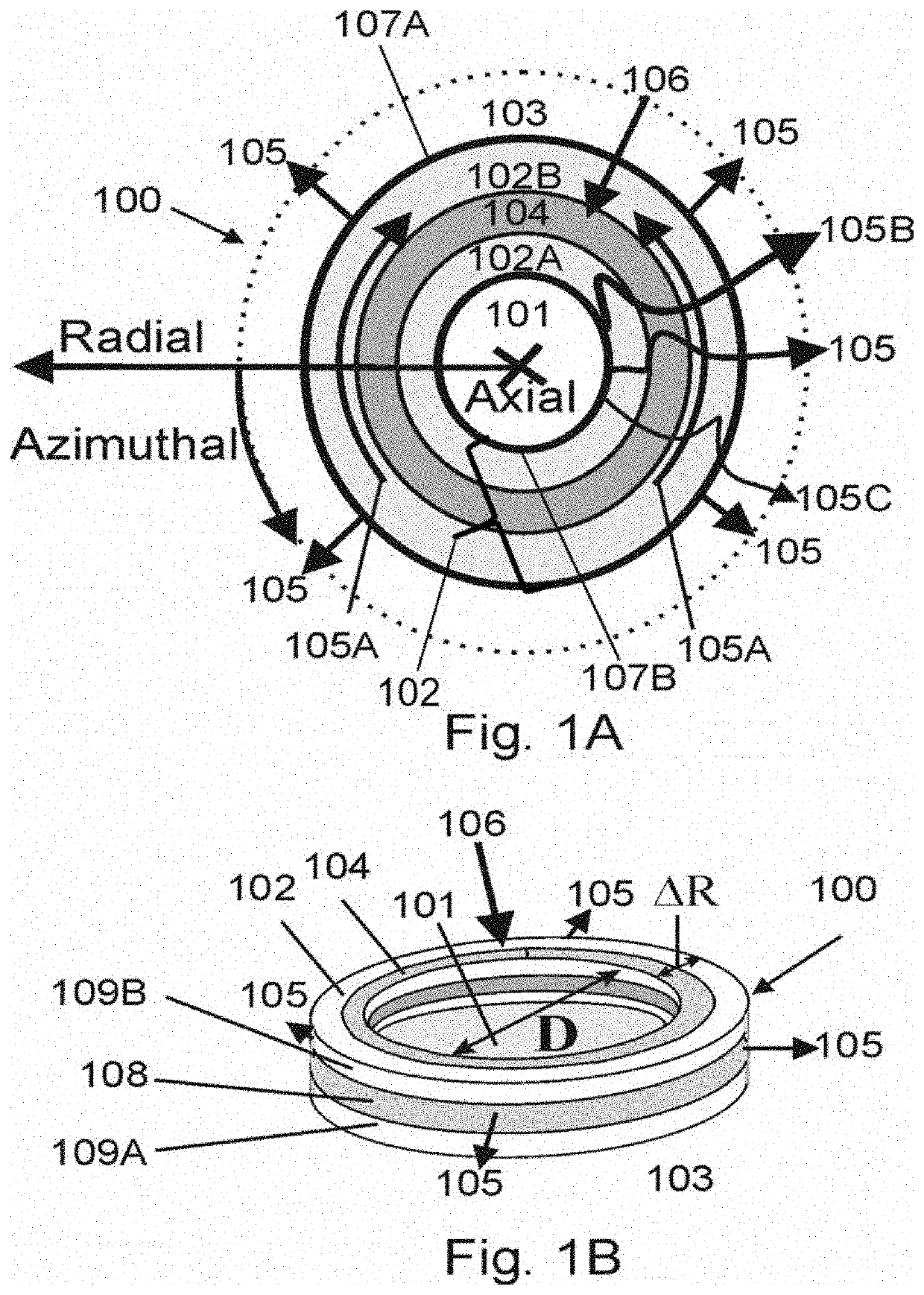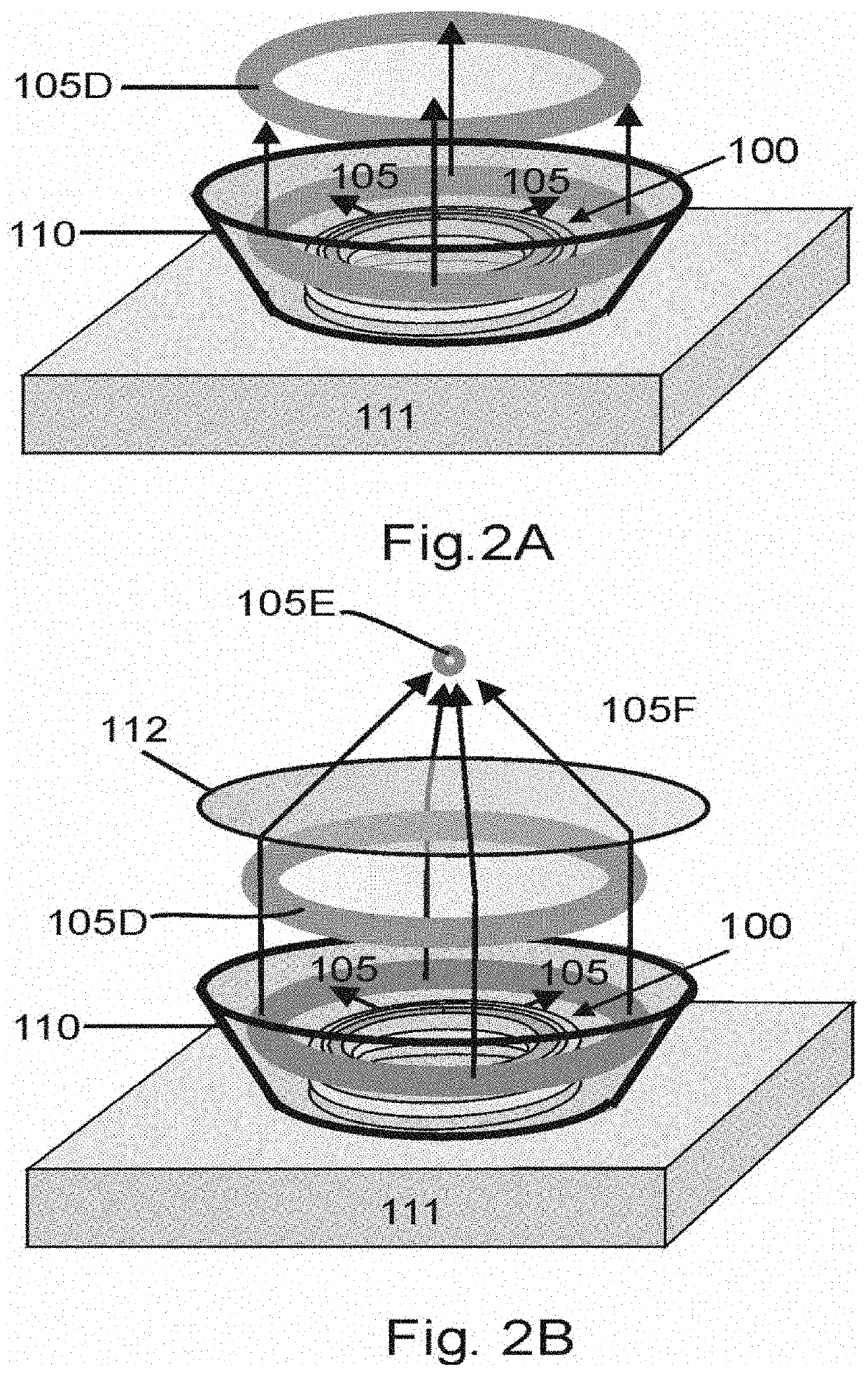Concentric cylindrical circumferential laser
a laser and concentric cylindrical technology, applied in the direction of laser details, active medium shape and construction, semiconductor lasers, etc., can solve the problems of limiting micro-cavity laser resonators to very low power applications, optical cavity resonators losing their resonant properties,
- Summary
- Abstract
- Description
- Claims
- Application Information
AI Technical Summary
Benefits of technology
Problems solved by technology
Method used
Image
Examples
Embodiment Construction
[0052]As above noted, microcavity lasers, such as those of the type disclosed by An, are restricted to dimensions ranging from a few tens of microns to a few hundreds of microns and are not scalable to larger volumes. The method of optical amplification disclosed by An further restricts volume scaling due to reliance on an external optical source located outside the resonator, evanescently coupled to WGMs supported by the microresonator. Thus, as shown above, the laser architecture disclosed by An is further limited in volume to geometric extents on order with the optical wavelength, and coupled with the absence of gain media within the resonator, no connection can be made to resonator scaling to volumes greater than the optical wavelength. Thus, An cannot achieve scalability to large scale resonators on the order of several inches or greater with high power radial radiative laser emission.
[0053]Also, as above noted, Shreter discloses assembly techniques to form bar arrays of indivi...
PUM
| Property | Measurement | Unit |
|---|---|---|
| wavelengths | aaaaa | aaaaa |
| diameters | aaaaa | aaaaa |
| output powers | aaaaa | aaaaa |
Abstract
Description
Claims
Application Information
 Login to View More
Login to View More - R&D
- Intellectual Property
- Life Sciences
- Materials
- Tech Scout
- Unparalleled Data Quality
- Higher Quality Content
- 60% Fewer Hallucinations
Browse by: Latest US Patents, China's latest patents, Technical Efficacy Thesaurus, Application Domain, Technology Topic, Popular Technical Reports.
© 2025 PatSnap. All rights reserved.Legal|Privacy policy|Modern Slavery Act Transparency Statement|Sitemap|About US| Contact US: help@patsnap.com



